I hate to admit it, but our dear comet is fading. Only a little though. As Comet Q2 Lovejoy wends its way from Earth toward perihelion and beyond, it will slowly dim and diminish. With an orbital period of approximately 8,000 years it has a long journey ahead. Down here on Earth, we continue to look up every clear night hoping for yet another look at what’s been a wonderful comet.

Despite its inevitable departure I encourage you to continue following Comet Lovejoy. It’s not often a comet vaults to naked eye brightness, and this one should remain visible without optical aid through mid-February.
Like a human celebrity, Lovejoy’s been the focus of attention from beginners and professionals alike using everything from cheap cellphone cameras to high-end telescopes to capture its magic. Who can get enough of that wildly fluctuating ion tail and greeny-blue coma?
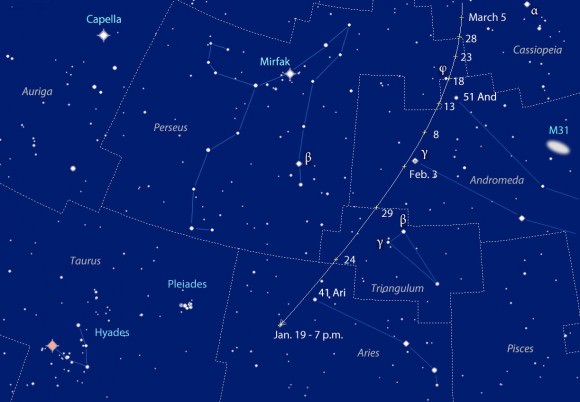
The comet continues moving northward all winter long, sliding through the diminutive constellations Aries and Triangulum, across Andromeda and into Cassiopeia, fading as she goes. You can use the map above and binoculars to help you follow it. I like to create lines and triangles using bright stars and deep sky objects to direct me to the comet.
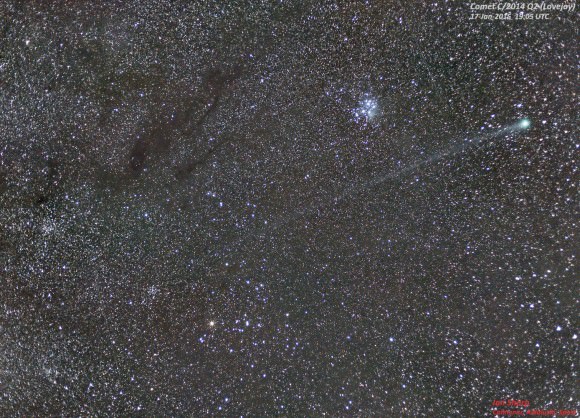
Tonight for instance, Lovejoy one fist held at arm’s length due west of the Pleiades. On the 29th, it’s on a line from Beta Persei (Algol) to Beta Trianguli. On February 3rd, it pulls right up alongside the colorful double star Gamma Andromedae, also called Almach, and on the 8th forms one of the apexes of an equilateral triangle with the two Betas. You get the idea.
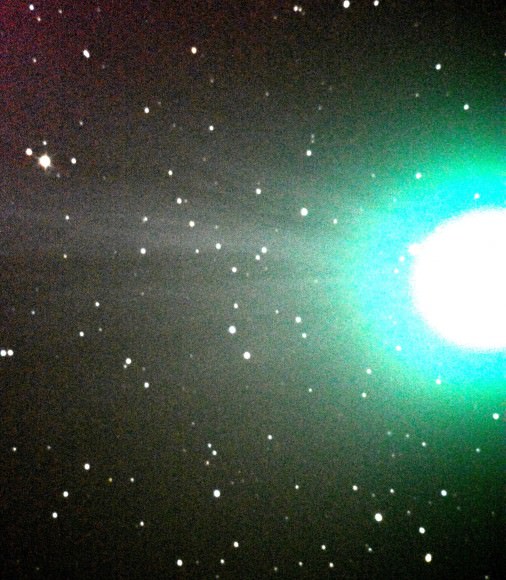
The waxing moon will interfere with viewing beginning next weekend and render the comet nil with the naked eye, you’ll still be able to track it in binoculars during that time. Dark skies return around Feb. 7.
Comet Lovejoy captured from the Dark Sky Alqueva Reserve, Portugal on Jan. 11th by Miguel Claro
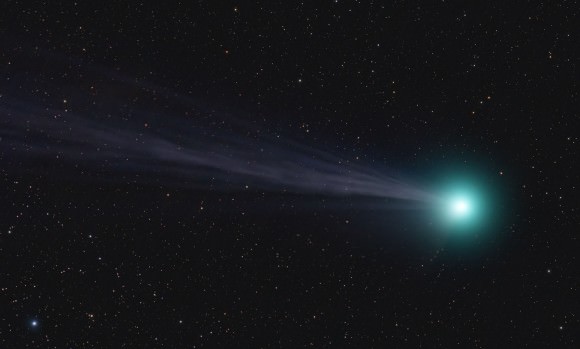

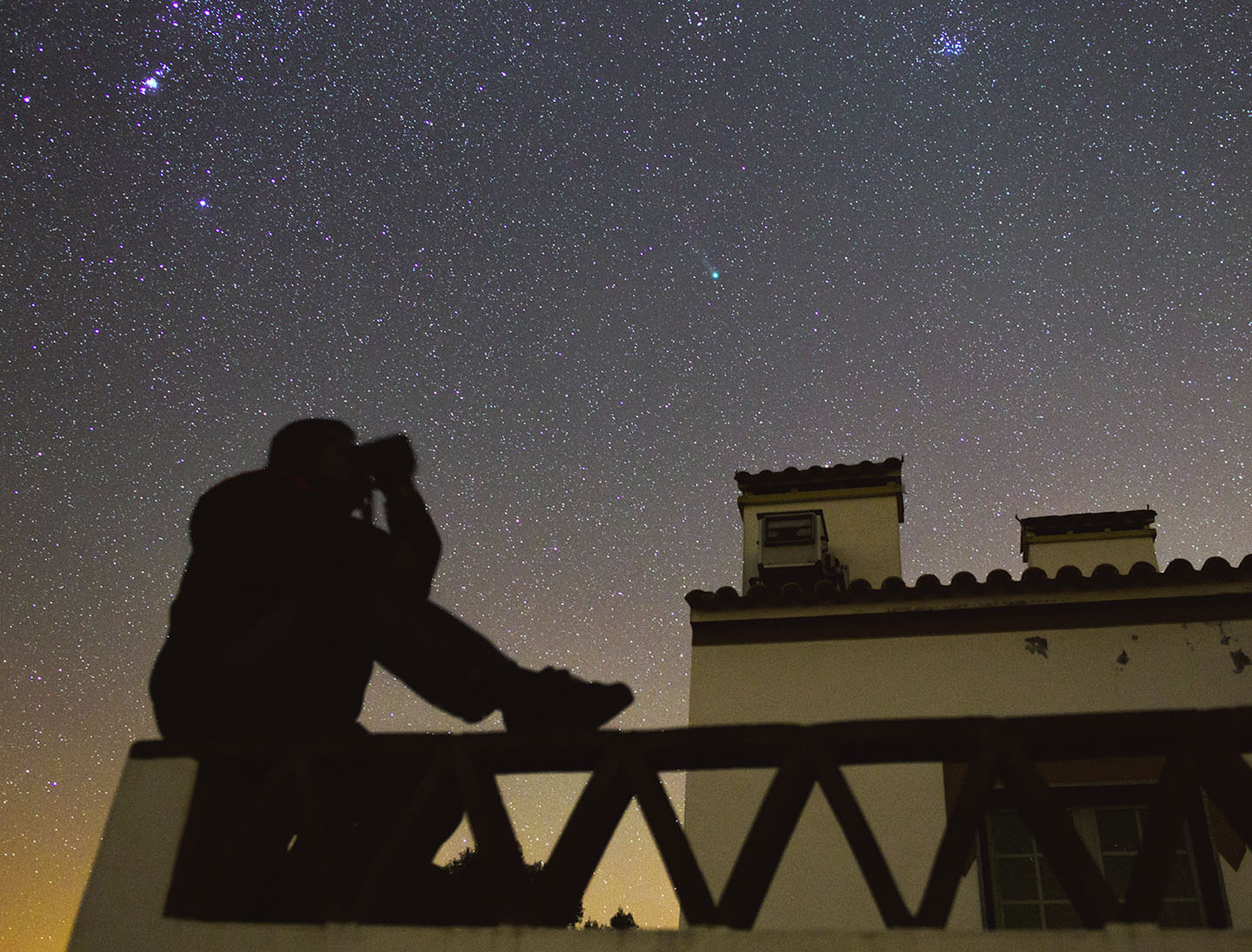
Wonderful sight…but naked eye = no tail. 🙁
2stepbay,
Yes, you’re right about the faintness of the tail for naked eye viewing. I saw only the very beginning of it from a pristine sky on one night. That same night however, the tail stretched a full 5 degrees in binoculars.
Dang! We’re still clouded out here on the left coast, +/-75 miles north of San Francisco. A week’s worth of splatter drizzle and then a heavy cloud deck… no fun! I want to play with my new toy! (A 12 1/2″ German Eq. mounted Newtonian ~@; )
Maybe tonight… WX *.sat shows a possible clearing offshore.